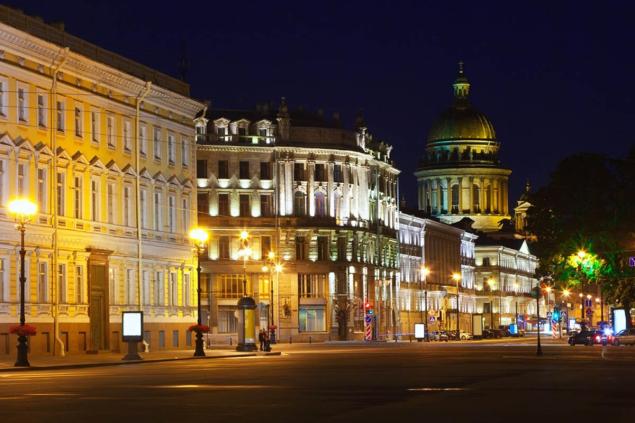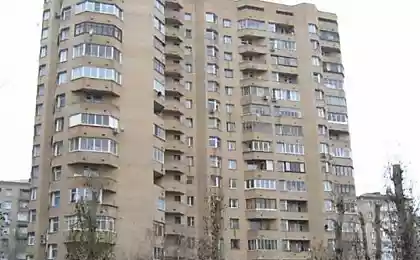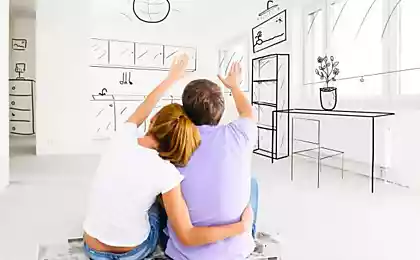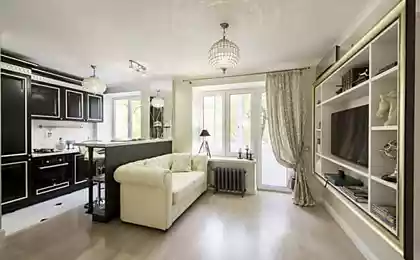239
How it happened that in the USSR even plain apartments in Khrushchev were considered something elite, degradation of architecture
Many still regard the Soviet system as a remarkable phenomenon. But it remains a mystery to most how a country with such potential lived so poorly. After all, the first criterion for economic growth in a country is the standard of living of its citizens. And it was he who constantly decreased, even with the overfulfillment of plans and supernormals. Take, at least, to assess the standard of living of citizens of a great country, how it has changed. Soviet architecture for the entire period of the existence of the USSR.

In order to appreciate the full scale, the analysis should begin from the time of tsarist Russia. In the late XIX and early XX century, any hardworking person could afford to build a house to his taste. In those days, the professions of teachers, doctors, engineers and employees of different ranks and ranks were very valued. Their salary allowed them to live in comfortable conditions by those standards.

Remember at least the works of classics of those times, who described their lives in their youth in pre-revolutionary Russia. As a rule, an apartment or a private house consisted of 4-5 rooms. Separately there was a room for servants, a large kitchen and household accommodation. High ceilings, wide marble stairs, double oak doors - and this is not a description of the royal castle. Such houses could afford ordinary working people without noble ranks.
The revolution of 1917 changed the whole way of life of ordinary people. With the coming to power of the “Soviets”, large houses were nationalized, and the authorities began to compact residents. The villages were ravaged and hungry. The residents were eager to flee to a city where they could survive. In the 20s, the country was completely ruined, nothing was built, but only destroyed and repainted.

Since the 30s, the first wave of housing construction began. Then "Stalinki" were considered elite housing. But in fact, they were a miserable semblance of ordinary housing before the revolution. The area of apartments decreased by 3 times, respectively, the number of rooms per family was now no more than 3. But there were more neighbors, because now the house instead of a maximum of seven apartments was 20. Below steel and ceilings, the highest ceilings in the "Stalinka" - 3.2 meters.
Then there was a terrible war, and a large amount of housing, architecture and history was destroyed and wiped off the face of the Earth. In 1953, Khrushchev came to power, who loudly announced that each family would get their own apartment. But, as it turned out, in practice, the USSR simply did not have the money to build housing. And then a project for the construction of the so-called Khrushchev was developed.

At the very beginning of this plan, houses were still built of brick. Saved on every centimeter and tried to reduce the consumption of building materials. Then homes began to be built from cheaper panels. The ceilings became even lower (up to 2.5 meters), the rooms became tiny, and two adults could not be in the kitchen at the same time.
Khrushchev was built in a chaotic order. The presence of a house territory or at least a similarity of a yard was not particularly thought about. The mention of such apartments still causes horror among many residents of the post-Soviet space, and some continue to live in them today.

In the 1970s, the Khrushchevs were replaced by panel 9-16-storey houses. By their parameters, they became slightly better than Khrushchev. Ceilings of at least 2.5 meters, the area of the two-bedroom apartment increased to 48 square meters, a separate bathroom, a slightly larger kitchen, thicker walls and an elevator. And such houses continue to be built in our time, although now not so often.
Throughout the history of the Soviet Union, the life of citizens resembled a quest for survival. Not only did you have to choose the right to have an apartment, you had to try to survive in it.

Today, many residents of the countries that were once part of the USSR continue to live in such houses and ask the question: “How could such a great and powerful country so disdain its citizens and settle them in multi-storey birdhouses?” ?

In order to appreciate the full scale, the analysis should begin from the time of tsarist Russia. In the late XIX and early XX century, any hardworking person could afford to build a house to his taste. In those days, the professions of teachers, doctors, engineers and employees of different ranks and ranks were very valued. Their salary allowed them to live in comfortable conditions by those standards.

Remember at least the works of classics of those times, who described their lives in their youth in pre-revolutionary Russia. As a rule, an apartment or a private house consisted of 4-5 rooms. Separately there was a room for servants, a large kitchen and household accommodation. High ceilings, wide marble stairs, double oak doors - and this is not a description of the royal castle. Such houses could afford ordinary working people without noble ranks.
The revolution of 1917 changed the whole way of life of ordinary people. With the coming to power of the “Soviets”, large houses were nationalized, and the authorities began to compact residents. The villages were ravaged and hungry. The residents were eager to flee to a city where they could survive. In the 20s, the country was completely ruined, nothing was built, but only destroyed and repainted.

Since the 30s, the first wave of housing construction began. Then "Stalinki" were considered elite housing. But in fact, they were a miserable semblance of ordinary housing before the revolution. The area of apartments decreased by 3 times, respectively, the number of rooms per family was now no more than 3. But there were more neighbors, because now the house instead of a maximum of seven apartments was 20. Below steel and ceilings, the highest ceilings in the "Stalinka" - 3.2 meters.
Then there was a terrible war, and a large amount of housing, architecture and history was destroyed and wiped off the face of the Earth. In 1953, Khrushchev came to power, who loudly announced that each family would get their own apartment. But, as it turned out, in practice, the USSR simply did not have the money to build housing. And then a project for the construction of the so-called Khrushchev was developed.

At the very beginning of this plan, houses were still built of brick. Saved on every centimeter and tried to reduce the consumption of building materials. Then homes began to be built from cheaper panels. The ceilings became even lower (up to 2.5 meters), the rooms became tiny, and two adults could not be in the kitchen at the same time.
Khrushchev was built in a chaotic order. The presence of a house territory or at least a similarity of a yard was not particularly thought about. The mention of such apartments still causes horror among many residents of the post-Soviet space, and some continue to live in them today.

In the 1970s, the Khrushchevs were replaced by panel 9-16-storey houses. By their parameters, they became slightly better than Khrushchev. Ceilings of at least 2.5 meters, the area of the two-bedroom apartment increased to 48 square meters, a separate bathroom, a slightly larger kitchen, thicker walls and an elevator. And such houses continue to be built in our time, although now not so often.
Throughout the history of the Soviet Union, the life of citizens resembled a quest for survival. Not only did you have to choose the right to have an apartment, you had to try to survive in it.

Today, many residents of the countries that were once part of the USSR continue to live in such houses and ask the question: “How could such a great and powerful country so disdain its citizens and settle them in multi-storey birdhouses?” ?
To open up financial roads and let money into your life, tear these two things apart
Laima Vaikule openly spoke about how she will forever remember Valentin Yudashkin























